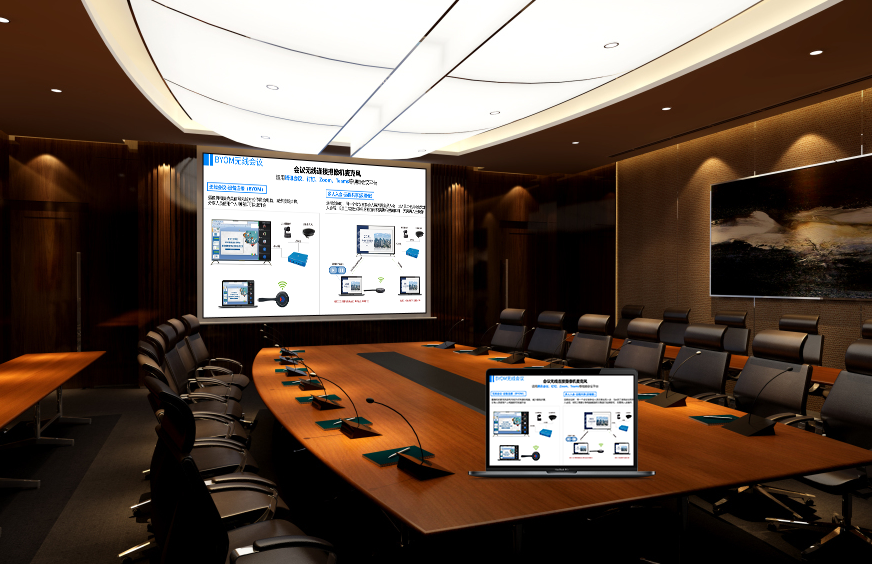DLNA: The Wireless Sharing Key for Classroom Multimedia
In campuses where multimedia teaching resources are increasingly abundant, the combination of DLNA technology and screen mirroring devices has become the “resource flow hub” of smart classrooms. With the advantages of streaming transmission and cross-terminal compatibility, it makes the sharing of teaching resources such as audio, video, and images more efficient and flexible.
Streaming Transmission: Enjoy HD Multimedia Seamlessly
In the past, playing multimedia resources in class often required copying files to large-screen devices first—this was not only time-consuming but also prone to playback failures due to format incompatibility. Screen mirroring devices supporting DLNA have completely changed this model through streaming transmission technology. Teachers only need to select audio, video, or image files on terminals such as mobile phones and computers, and directly push them to the screen mirroring device via the DLNA function. The resources will then play on the classroom large screen in real time, with no need to wait for file transmission to complete.
In a music class, for example, teachers can use mobile phones to push clips of classic music via DLNA; lossless sound quality plays instantly, allowing students to immerse themselves in melody changes. When appreciating prose illustrations in a Chinese class, high-definition pictures are batch-pushed via DLNA, and the sequential display of images on the large screen, paired with the teacher’s explanation, makes the integration of text and visuals more engaging.
Cross-Terminal Sharing: Simplify Resource Transfer
DLNA technology breaks down the sharing barriers between devices of different brands and systems. When paired with a screen mirroring device, various terminals in teachers’ and students’ hands can become output ports for teaching resources.
In an English class, audio recordings of oral practice made by students on Android tablets can be directly pushed to the screen mirroring device via DLNA for class-wide sharing, allowing teachers to give immediate feedback without collecting files. During group presentations in a history class, clips of historical documentaries from iPhones and historical materials from Windows computers can be pushed sequentially via the DLNA function of the same screen mirroring device. The cross-terminal compatibility feature frees resource transfer from device limitations, turning every terminal into a “material library” for the classroom.
Multi-Source Collaboration: Enrich Teaching Layers
DLNA supports simultaneous resource pushing from multiple terminals to the screen mirroring device, providing more possibilities for differentiated instruction and interactive classrooms.
When explaining ecosystems in a biology class, teachers can use computers to cast ecosystem structure diagrams via DLNA, while having groups push photos of campus plants they took with tablets. The alternating display of structure diagrams and real-scene images on the large screen deeply integrates abstract concepts with real-world scenarios. During theme sharing in a class meeting, multiple students can take turns pushing their PPTs and short video works via DLNA—no frequent device switching is needed. The smooth connection keeps the sharing rhythm tight and enhances classroom participation.
From the instant playback of multimedia resources to the cross-terminal flow of resources, and further to the collaborative presentation of multi-source content, the combination of DLNA and screen mirroring devices opens up the transmission channel for teaching resources with a lightweight sharing method, making multimedia teaching in smart classrooms more vibrant.
